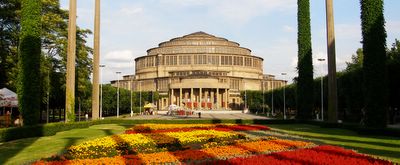
The Hala Ludowa, or Jahrhunderthalle (1913), is an impressive, if little-known, example of early modern architecture. The reinforced concrete dome's 65 metre radius is greater than St. Peter's in Rome. It was built to mark the centennial of von Blücher's victory over Napoleon at the Battle of Waterloo. In this slightly doctored photo I have removed the silly 100 metre-high steel spire, put up for the World Congress of Intellectuals for Peace in 1948, which blocks the view of the hall that Max Berg, the architect, no doubt intended. Wrocław, June 30, 2005.
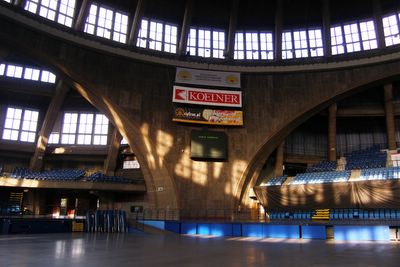
The vast hall, which can seat 10,000, has been used by speakers ranging from Adolph Hitler to Pope John-Paul II. Note the design of the windows. Berg did not want them to look like holes in the wall, so he used multipe levels of stepped clerestory windows, which result in good interior lighting and a novel form for the dome.

Wrocław has many other interesting buildings. This is the Town Hall, built between 1327 and 1504, and miraculously spared destruction in WWII. There's been an excellent beer hall in the basement for over 5 centuries.
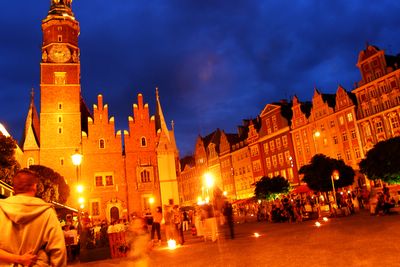
What a difference a decade makes! Or is it joining the EU? I've never seen Poland's cities so alive. Not that long ago, when the sun went down, the streets emptied of people. Truthfully, it was a little dull, although with an edge thanks to the ever-present menace of a totalitarian regime and a sizable occupation force of Soviet troops. It was the kind of atmosphere where going out at night for a coffee and piece of cake could have undertones of conspiracy and danger. Now the worst that can happen is too many new Starbuck's opening up in spaces once devoted to small art galleries and book stores.
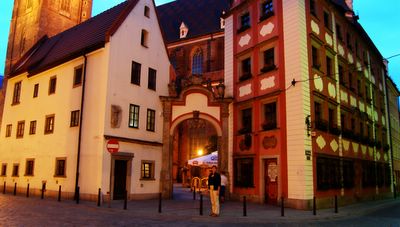
These two houses, which provide the gateway to St. Elizabeth's Church, are known as Jaś and Małgosia, or Hansel and Gretel.
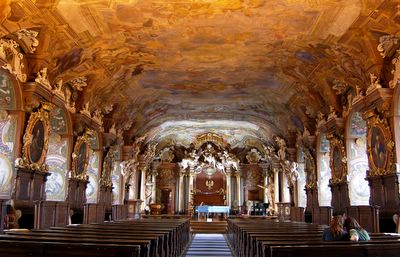
The Aula Leopoldina, the assembly hall of the Jesuit Academy, now the Universty of Wrocław, is another orgy of Baroque. It was built in 1728-48, and is named after Holy Roman Emperor Leopold I, who founded the Academy in 1702 and died shortly after.

Can't you just see how the Jesuits used the Baroque style as their heavy artillery in the Counter-Reformation? Talk about an assault on the senses, trumpeting the glory of the universal church, announcing "we're back" though we may have strayed, and seducing the faithful with breath-taking iconography lest they be tempted to doubt the role of the church in religious life.
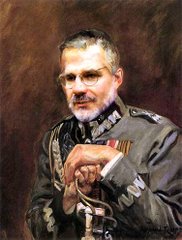
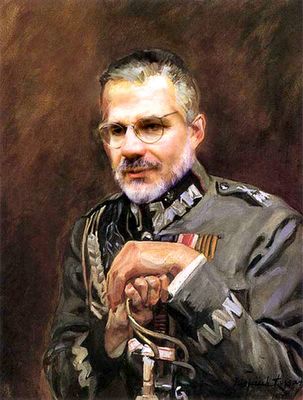
No comments:
Post a Comment